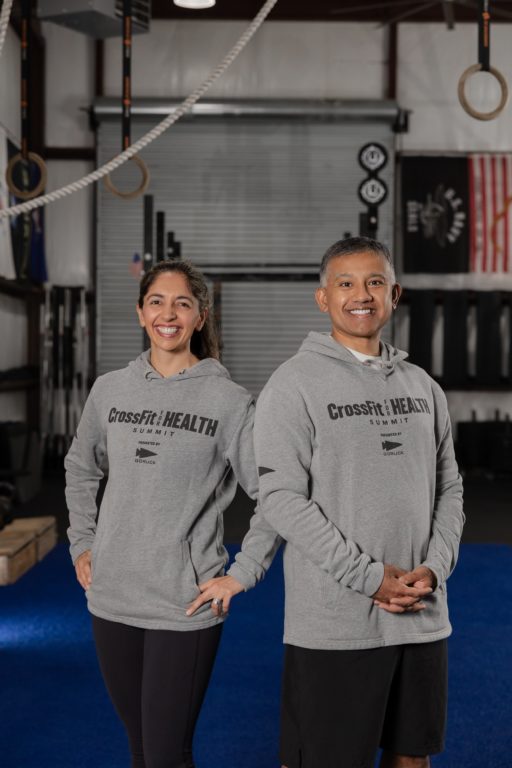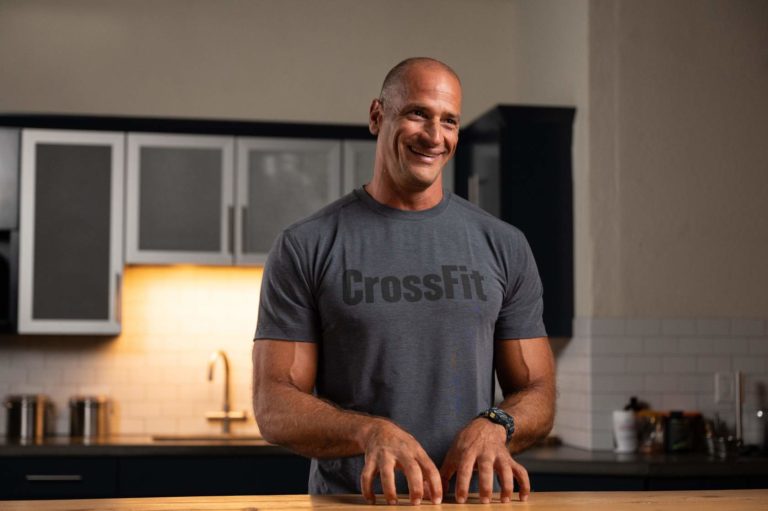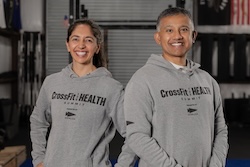“Wherever the art of medicine is loved, there is also a love of humanity.” – Hippocrates
Just like “fruitsandvegetables,” seems to have blended into a single term that conveys few details or practical information, the same can be said for the recommendation to improve “dietandexercise.” Pharmaceutical companies and many physicians pay lip service to implementing good diet and exercise habits in conjunction with the drugs they are developing or prescribing, but rarely provide useful, actionable information patients can use to improve outcomes.
What if, instead of a cursory nod to the importance of diet and exercise, you had a doctor who took an interest in longevity, health, fitness, and quality of life, and understood the power of proper nutrition and movement to impact all these? What would they tell you? If they’d done their research, they’d expound on the virtues of weight training, high-intensity circuits, functional movements, and variety in training. They’d tell you to eat the whole, unprocessed foods you find on the grocery store’s perimeter, including fruits and vegetables, and to leave the boxed and packaged processed junk on the shelves. In short, they’d tell you to do something like CrossFit.
But you don’t have to take our word for it. Below, read how Dr. Shveta Raju, MD, MBA, CF-L2, and Double Board-Certified Internal Medicine and Obesity Medicine physician, and Dr. Dinesh Raju, MD, Ph.D., CF-L3, and certified by the American Board of Psychiatry and Neurology and the American Board of Sleep Medicine, bring diet and exercise, through CrossFit, to their patients. Below is their recent contribution to the CrossFit Medical Society newsletter.
As outpatient physicians, we see 20-30 patients in our clinics each day. Our patient population is very similar to the patient population across the country — over 70% are overweight or obese, living sedentary lifestyles, and over-consuming highly processed foods. More than ever, patients are working from home, isolated from the broader community, and frequently dependent on substances — prescribed and unprescribed — to manage their moods and mental health throughout the day.
 Although the 10-15 minutes we get to spend with our patients can positively impact their health, we are more aware than ever that those few minutes are not enough time to help our patients change their lifestyles in a meaningful way. It takes time to have discussions on how to improve their metabolic health, reduce their risk of dementia, or even explain to them what we mean when we say, ‘We can prescribe this medicine, or you can work on your diet and exercise, and we can see you back in three months.’
Although the 10-15 minutes we get to spend with our patients can positively impact their health, we are more aware than ever that those few minutes are not enough time to help our patients change their lifestyles in a meaningful way. It takes time to have discussions on how to improve their metabolic health, reduce their risk of dementia, or even explain to them what we mean when we say, ‘We can prescribe this medicine, or you can work on your diet and exercise, and we can see you back in three months.’
Fortunately, as physicians who have been actively training and studying CrossFit (Dinesh since 2013 and Shveta since 2018), we have the knowledge and tools to guide our patients and colleagues to the right diet and exercise. Our CrossFit education from the L1 and L2 courses was grounded in the CrossFit methodology as outlined in ‘What is Fitness?’ The L1 manual is the core foundation of the system that we know works. So, how can we bring this to our patients? How can we reach more people who can benefit from this system?
We submit the first step is acknowledging CrossFit is different. CrossFit is CrossFit. It is not the 20-45 minute workouts that are sold in F45, Orangetheory, Barry’s Bootcamp, or the hundreds of other “functional fitness,” “HIIT,” or “boot camp” gyms all around the country and even the world. Rather, CrossFit incorporates running, rowing, and biking. With CrossFit, you have days when the workout is 3 minutes (e.g., Fran) and days when the workout is 50 minutes (e.g., Murph). You’ll find in your CrossFit workouts you are going fast, going hard, going heavy, getting upside down, and working toward improvement. And no small bonus: CrossFit connects you to a strong local and worldwide community.
In addition to the variability in training movements and time domains, CrossFit emphasizes gymnastics and heavy weightlifting — in a way that no other program accessible to people of all backgrounds and skill levels can. When our patients tell us they are doing strength training, and we ask them how heavy they deadlift or back squat, they rarely mention a number higher than a 25-lb dumbbell.
While evaluating various credentialing options for fitness professionals, the CrossFit training path (L1, L2, L3, and L4) stands apart in its high quality and standards. As physicians, we know that learning to diagnose and treat human disease requires learning from more senior physicians. Coaching human movement is no different – it’s best learned in person from another human. The CrossFit training courses provide valuable in-person education, instilling the depth and breadth of the CrossFit methodology.
The CrossFit community is rooted in the individual affiliate. Coaches in the affiliate hold a standard. Whether it be the class structure, engagement with athletes, instruction on range of motion and technique, or education on CrossFit’s infinite scalability, the affiliate and its coaches unite all levels of athletes through a common and shared experience. “Whiteboard moments” for education and connection foster deep relationships that extend outside the walls of the individual box and can be personal and transformative. This uniquely valuable characteristic has made our affiliate community so resilient despite the turbulence of outside factors. Perhaps most importantly, we greatly admire affiliate owners. Affiliates are independent, small businesses where the owners have invested their time and often their life savings into improving the fitness (health) of others, recognizing the benefit of the worldwide CrossFit community beyond the four walls of their own gym.
Physicians strive to be evidence-based, and as such, we are always open to a new idea, a new system, or a new methodology. We have seen the results when dedicated CrossFit coaches execute the CrossFit methodology in a CrossFit affiliate. We truly believe there is nothing more important in this life than restoring and improving the health of the people around us. We will continue to do so in our gym and our practice, embracing this model of fitness and wellness for ourselves, our families, and our patients.
We look forward to sharing this knowledge with many more people in the coming months and years.
Changing Lives
If you are a healthcare professional looking to provide life-changing fitness and nutrition information to your patients, consider joining the CrossFit Medical Society to learn best practices from professionals like the Rajus. (It’s free for community members.) For any patient who needs help implementing CrossFit’s diet and exercise for a life-saving health transformation, the first step is to contact an affiliate near you and start your journey today.
About the AuthorS
 Stephane Rochet is a Senior Content Writer for CrossFit. He has worked as a Flowmaster on the CrossFit Seminar Staff and has over 15 years of experience as a collegiate/tactical strength and conditioning coach. He is a Certified CrossFit Trainer (CF-L3) and enjoys training athletes in his garage gym.
Stephane Rochet is a Senior Content Writer for CrossFit. He has worked as a Flowmaster on the CrossFit Seminar Staff and has over 15 years of experience as a collegiate/tactical strength and conditioning coach. He is a Certified CrossFit Trainer (CF-L3) and enjoys training athletes in his garage gym.
 Dr. Dinesh Raju, MD, Ph.D., CF-L3, discovered CrossFit in 2013, and (although it took some time) Dr. Shveta Raju, MD, MBA, CF-L2, eventually became a convert in 2018. They are active members of their affiliate, Mad Mare CrossFit near Atlanta, and do amazing work bridging the gap between CrossFit and the Clinic. Learn more about them here.
Dr. Dinesh Raju, MD, Ph.D., CF-L3, discovered CrossFit in 2013, and (although it took some time) Dr. Shveta Raju, MD, MBA, CF-L2, eventually became a convert in 2018. They are active members of their affiliate, Mad Mare CrossFit near Atlanta, and do amazing work bridging the gap between CrossFit and the Clinic. Learn more about them here.
Comments on Prescribing CrossFit
The doctors of the Future
Prescribing CrossFit
1